Electricity metering devices - types and types, main characteristics
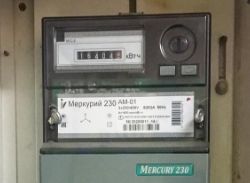 Electric energy is transmitted over vast distances between different states, and is distributed and consumed in the most unexpected places and volumes. All these processes require automatic accounting of the passing capacities and the works performed by them. The state of the energy system is constantly changing. It is necessary to analyze and competently manage the main technical parameters.
Electric energy is transmitted over vast distances between different states, and is distributed and consumed in the most unexpected places and volumes. All these processes require automatic accounting of the passing capacities and the works performed by them. The state of the energy system is constantly changing. It is necessary to analyze and competently manage the main technical parameters.
The measurement of the current power is assigned to wattmeters, the unit of measurement of which is 1 watt, and the work performed over a certain period of time is assigned to meters that take into account the number of watts per hour. Depending on the amount of energy taken into account, the devices operate within kilo-, mega-, gigo- or tera-units. This allows: one main meter located at a substation providing power ...
The main types of transformer designs
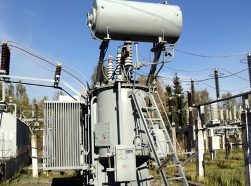 Among the diverse transformer devices, transformers are most often found: power, measuring and special. The term “power” defines the purpose associated with the conversion of high power. This is due to the fact that most household and industrial consumers of electric networks need power supply voltage of 380/220 volts. However, delivering it over long distances is associated with huge energy losses, which are reduced through the use of high-voltage lines.
Among the diverse transformer devices, transformers are most often found: power, measuring and special. The term “power” defines the purpose associated with the conversion of high power. This is due to the fact that most household and industrial consumers of electric networks need power supply voltage of 380/220 volts. However, delivering it over long distances is associated with huge energy losses, which are reduced through the use of high-voltage lines.
Measuring transformers are created with a high class of accuracy. During operation, their metrological characteristics are periodically checked for correct measurement of both the values and the angles of deviation of the current and voltage vectors. The main feature of the device of current transformers is that they are constantly operated in short circuit mode ...
 In energy, electronics and other branches of applied electrical engineering, a large role is given to transformations of electromagnetic energy from one type to another. Numerous transformer devices, which are created for various production tasks, deal with this issue.
In energy, electronics and other branches of applied electrical engineering, a large role is given to transformations of electromagnetic energy from one type to another. Numerous transformer devices, which are created for various production tasks, deal with this issue.
Some of them, having the most complex design, perform the transformation of powerful high-voltage energy flows, for example. 500 or 750 kilovolts in 330 and 110 kV or in the opposite direction. Others work as a part of small-sized devices of household appliances, electronic devices, automation systems. They are also widely used in various power supplies of mobile devices. Transformers work only in alternating voltage circuits of different frequencies and are not intended for use in DC circuits that use other types of converters ...
How to calculate cable voltage loss
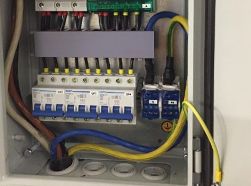
When the cable design is known, its resistivity is calculated from the resistivity, thickness and length of the metal of the current-carrying core. The specific reactance and length determine the total reactance of the cable. Often, for calculation, it is enough to take a directory with tables and calculate the types of resistances (active and reactive) from the cable brand with certain technical characteristics. Knowing the two legs of a right triangle calculate the hypotenuse - the value of the complex resistance.
A cable is created to transmit a nominal current. Multiplying its numerical value by the complex resistance, we find out the magnitude of the voltage drop. Both legs are calculated similarly. Next, simple trigonometric calculations are performed.Also, special tables, graphs and diagrams summarized in technical manuals are used to calculate voltage losses. ...
Modern synchronous jet engines
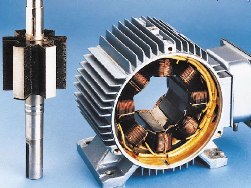 In synchronous jet motors, the principle of creating a rotor torque is somewhat different from asynchronous and traditional synchronous motors. Here the decisive role is assigned to the rotor core itself.
In synchronous jet motors, the principle of creating a rotor torque is somewhat different from asynchronous and traditional synchronous motors. Here the decisive role is assigned to the rotor core itself.
The rotor of a jet synchronous motor does not have windings, not even a short-circuited winding. Instead, the rotor core is made highly heterogeneous in magnetic conductivity: the magnetic conductivity along the rotor differs transversely from the magnetic conductivity. Thanks to this unusual approach, there is no need for both rotor windings and permanent magnets on it. As for the stator, the stator winding of the jet synchronous motor can be concentrated or distributed, while the stator core and housing remain normal. The whole feature is in the highly heterogeneous core of the rotor.For jet synchronous motors are characteristic ...
Connection of an ammeter and a voltmeter in a direct and alternating current network
 A voltage transformer is used to measure alternating voltage. This is a step-down transformer with two windings, the primary winding of which is connected to two points of the circuit, between which you need to measure the voltage, and the secondary - directly to the voltmeter. Measuring transformers in the diagrams are depicted as ordinary transformers.
A voltage transformer is used to measure alternating voltage. This is a step-down transformer with two windings, the primary winding of which is connected to two points of the circuit, between which you need to measure the voltage, and the secondary - directly to the voltmeter. Measuring transformers in the diagrams are depicted as ordinary transformers.
A transformer without a loaded secondary winding operates in idle mode, and when a voltmeter is connected, the resistance of which is high, the transformer remains practically in this mode, and therefore the measured voltage can be considered proportional to the voltage applied to the primary winding, taking into account the transformation coefficient equal to the ratio of the number of turns in its secondary and primary windings. In this way, a high voltage can be measured, while a small safe voltage will be applied to the device ...
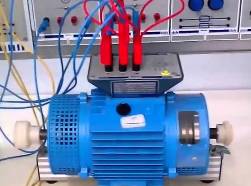 There are many installations, electric drives, technologies, where power supply requires not an alternating, but a constant voltage. Such installations include various industrial machines, construction equipment, electric transport engines (metro, trolley bus, loader, electric car), and other DC installations of various kinds. The supply voltage for some of these devices must be variable so that, for example, a changing current supply to the electric motor leads to a corresponding change in the speed of rotation of its rotor.
There are many installations, electric drives, technologies, where power supply requires not an alternating, but a constant voltage. Such installations include various industrial machines, construction equipment, electric transport engines (metro, trolley bus, loader, electric car), and other DC installations of various kinds. The supply voltage for some of these devices must be variable so that, for example, a changing current supply to the electric motor leads to a corresponding change in the speed of rotation of its rotor.
One of the first ways to regulate DC voltage is to regulate with a rheostat. Then we can recall the circuit engine - generator - engine, where again, by adjusting the current in the excitation winding of the generator, a change in operating parameters was achieved final engine. But these systems are not economical ...
Which protection devices are better: fuses or circuit breakers?
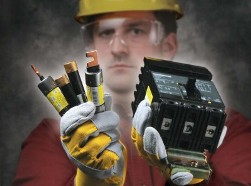 When operating a domestic and industrial electrical network, there are always risks of electrical injuries or equipment damage. They can occur at any time when critical conditions appear. To reduce such consequences allow protective devices. Their use significantly increases the safety of using electricity. Electric circuit protection works on the basis of: fuse, mechanical circuit breaker.
When operating a domestic and industrial electrical network, there are always risks of electrical injuries or equipment damage. They can occur at any time when critical conditions appear. To reduce such consequences allow protective devices. Their use significantly increases the safety of using electricity. Electric circuit protection works on the basis of: fuse, mechanical circuit breaker.
Two brilliant scientists Joule and Lenz simultaneously established the laws of mutual relations between the magnitude of the passing current in the conductor and the release of heat from it, revealing the dependences on the circuit resistance and the duration of the time interval. Their findings made it possible to create the simplest protective structures based on the thermal effect of current on the metal of the wire. Electrical fuses use ...
